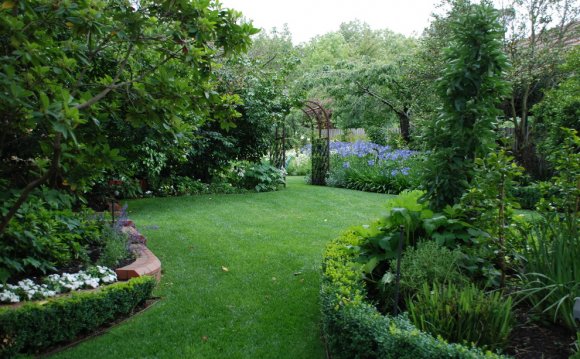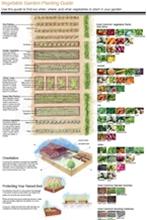
 Veggie Garden Guide
Veggie Garden Guide
Use this infographic to find out when, where and what vegetables to plant in your garden. Get tips for garden orientation, size and irrigation. Plus get ideas for protecting raised beds from pests and frost damage.
Vegetable Garden Planting Guide (PDF)
The popularity of vegetable gardens has increased tenfold in the last few years, as more homeowners embrace the advantages of planting their own vegetables and herbs, whether it's to grow food organically, save a little money, or engage in an interesting and rewarding pastime.
A vegetable garden can be grown in your backyard, front yard or even on a balcony or little-used side yard, as long as there is plenty of sun exposure. There are many design and layout options for a vegetable garden. You may want to opt for raised beds so you can better control the quality of the soil. Or you may want to go with a beautiful kitchen garden that is as much a focal point as a place to grow edibles. Finally, if you are short on space, you may even consider growing vegetables in containers. With a little bit of thoughtful planning, vegetable gardens can be as beautiful as any flower garden. And with a lit bit of effort, you can maximize your garden's productivity and enjoy the fruits of your labor.
Get these tipsIn this section, you'll find tips from landscaping professionals on:
- Design ideas for planting raised garden beds that make it easier to control growing conditions and access your plants.
- The key factors to consider when determining the size of a raised vegetable garden, including available space, desired yield and accessibility.
- The material options for constructing a raised bed, including wood, masonry block, brick and stone.
- Methods for irrigating a raised garden bed.
- Tips for planting a successful kitchen garden, which combines herbs vegetables, fruits, perennials and shrubs so it's both functional and aesthetically pleasing.
- Popular design plans for kitchen gardens, including formal, four-square and patterned.
- Using the square-foot gardening method to yield the same crop as a row garden but in a fifth of the space.
- What types of trees to avoid near a vegetable garden because they emit chemicals that act as herbicides or contain toxins in the bark, leaves or roots.
- Tips for growing vegetables and herbs in containers when space is limited.
- Four important design caveats for incorporating an edible garden into your landscape.
- A look at the variety of edible plants you can grow, including trees, vines, shrubs and perennials that produce fruit & herbs
- How to protect your vegetable garden from deer, gophers, and other forms of wildlife.
- The best orientation for a vegetable garden to maximize sun exposure.
- Vertical support options for small vegetable gardens, such as trellises and tomato cages.
- Where you can donate vegetables if you grow more than you can consume.
Vegetable gardening is a rewarding experience that can feed both your body and soul. Many landscaping professionals specialize in growing vegetables and herbs and can help you plan a bountiful garden, no matter what your site conditions.
YOU MIGHT ALSO LIKE












